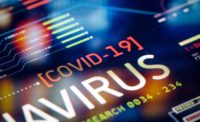Keeping Access Simple
Reliability and cost efficiency are major concerns for end users. Other factors such as scalability and ease of use also factor into the purchase-making decision.
Newark Unified School District in Northern California, for instance, has installed 573 Schlage, Forestville, Conn., computer-managed (CM) locks to provide greater security at its campuses and cut down dramatically on the cost and time involved in re-keying locks. The District, on the east side of San Francisco Bay, has eight elementary schools, one middle school and one high school. There is also an adult school as well as an Ohlone College campus, which houses the Center for Career Transition. CM standalone locking systems have features found with online, networked systems. Multiple openings in an organization can be managed with a variety of standalone locking systems that share common software. The locks, access trim and offline hard-wired controllers that manage strikes and magnets can program with software from a laptop or PDA, regardless of what credential system is used. New users, access points and access privileges can be entered in seconds.
“The main reason for installing the new locks was security,” Paul Manley, director of maintenance operations and transportation for the school district, says.
Locks can also program to keep people out of areas for a variety of reasons that are not security related.
All exterior classrooms, hall entrances, exterior doors, offices, libraries and gyms have the new locks. CM locks are installed over old doors and on new fiberglass reinforced polypropylene doors, which are very strong and even repel graffiti. District doors have been set to auto lock at 10 p.m. and 1 a.m.
Easy Access
Manny Franco, a district maintenance specialist, programs all of the locks. No longer does he need to rekey all locks if a person leaves employment. Now, it takes him less than two and a half hours to reprogram and replace a card for all locks at the high school, much less than the nine weeks it took to re-key all the doors. While cost of re-keying an entire campus was about $25,000, it now costs less than $100 to replace a card and reprogram the locks. If Franco downloads audits regularly, he can find a timeframe and produce a report in 15 minutes, allowing administrators to pinpoint exactly who has been through the door and when.Before the locks were installed, some campus employees felt that the audit trail capabilities were too intrusive. One of the primary objectors, a department chair, later became a believer when he needed to know who was coming and going through a particular door, Manley reports. “It helped him solve a problem he could not have solved otherwise.”
The system operator can easily control both users and access points based on time of day, day of week, credential needed and/or period of time. Reports show audit trails retrieved, access privileges granted and time functions established by either the user or door. Multiple credentials include codes, i-Buttons, magnetic stripe cards and proximity cards plus biometric hand geometry readers.
SIDEBAR: On the Market
Northern Computers Inc., Oak Creek Wis., has its NStar access control system, which is configured to meet the requirements of a two-door access control application. It’s expandable to meet growth potential. The architecture includes scalability, system expansions and upgrades.Features include a 32-bit processor, RS-232 or R-485 communications, expandable from 2,000 to 10,000 users and 10,000 to 100,000 events.
CyberLock, from Videx, Corvallis, Ore., intelligent lock cylinders are designed to quickly convert mechanical lock hardware into full-functioning access control systems. The CyberLock system restricts user’s access to specific locks at pre-selected days and times. A complete record of all entries and denied entries are stored in both the lock and key, providing a comprehensive audit trail of events for management.
Looking for a reprint of this article?
From high-res PDFs to custom plaques, order your copy today!






